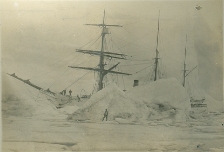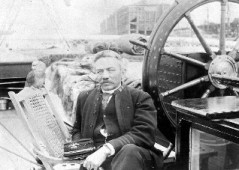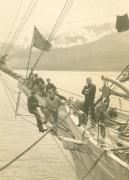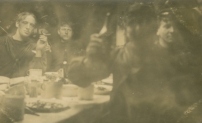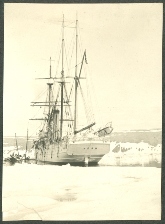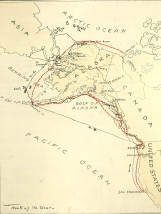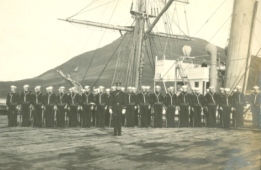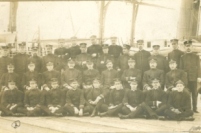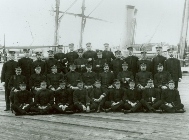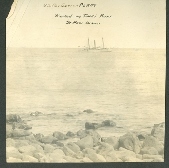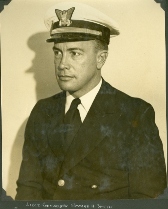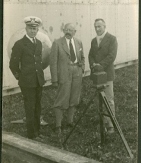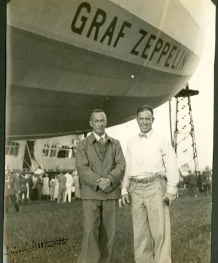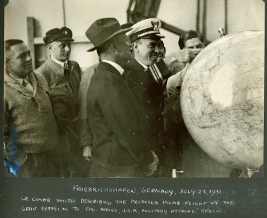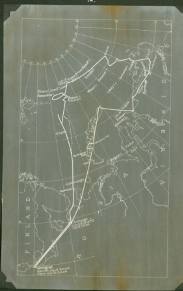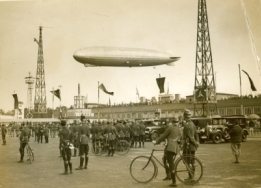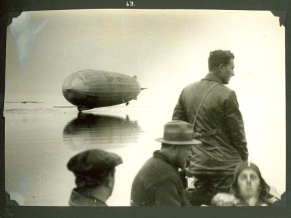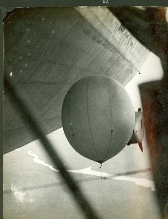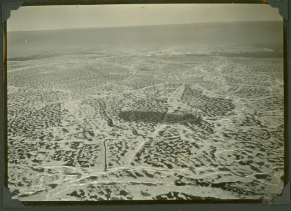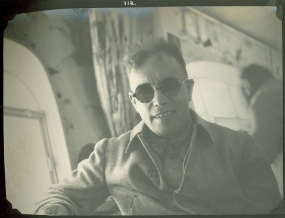U.S. Coast Guard Alaska & Arctic Operations:
A Historic
Photo Gallery
Selected Images From the Historian's Office Archives
| Official Coast Guard Photograph (click on thumbnail for High resolution image) | official caption, date, photo number & photographer (if known); other historical information (if any): |
|---|---|
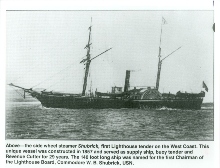 |
"The side wheel steamer Shubrick, first Lighthouse tender on
the West Coast. This unique vessel was constructed in 1857 and
served as supply ship, buoy tender and Revenue Cutter for 29
years. The 140 foot long ship was named for the first Chairman
of the Lighthouse Board, Commodore W. B. Shubrick, USN."
No date/photo number; photographer unknown. Arctic file.
In 1865, the U. S. Lighthouse Service’s tender Shubrick, then operating under the U.S. Revenue Cutter Service, became the service’s first unit to touch Russian Alaska’s coastline. The tender was the flagship supporting Western Union’s expedition to string a telegraph cable from North America to St. Petersburg, Russia. The plan was overtaken by the laying of the Atlantic cable. |
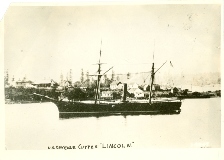 |
"U.S. Revenue
Cutter 'LINCOLN'". No date/photo number; photographer
unknown. Arctic file.
The cutter Lincoln, which entered service in 1865, was first assigned to Port Angeles, Washington, where she arrived on 21 May 1866. She made three cruises to Alaska, including one carrying the U.S. delegation for the transfer ceremony of the territory of Alaska from Russia to the U.S. She later carried a Coast Survey scientific team to the new territory. |
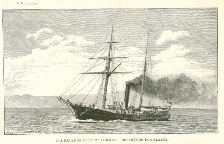 |
"U.S. REVENUE CUTTER "CORWIN,' DEPARTURE
FOR ALASKA." H. Ex. 153 49I; dated 1887; engraving by
Moss Eng Co., NY. Scanned from the 1885 Report.
In 1880, the cutter Corwin, as a collateral duty, placed her bows over the Arctic Circle and cruised some 6,000 miles in the frigid waters of the far north with orders to protect local seal populations. This marks the beginning of an annual cruise that continues to this day. Cutters provided badly needed rescue services. During the 1880-1881 seasons, for example, Corwin, under the command of Captain Calvin L. Hooper, searched the Siberian and Arctic Alaskan coasts for the exploring steamer Jeannette and two whalers, Mount Wollaston and Vigilant. On 12 April 1881 Captain Hooper also claimed Wrangel Island for the U.S. While under the command of Captain "Hell Roaring" Mike Healy in 1884-1885, Corwin made two cruises through the Arctic that were documented by published cruise reports (see the Ice Index page to access the reports). |
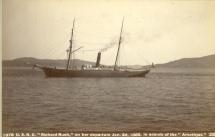 |
"U.S.R.C. 'Richard Rush,' on her departure Jan.
2d, 1886 in search of the 'Amethyst.'" Photo No. 1378; photo
by "Tabor" [?]. Arctic file.
The Rush served in Alaskan waters and on the Bering Sea Patrol from 1886 to 1913. |
| "Bear, on the
Bering Sea Patrol, 1900." No photo number.
Probably the most famous cutter to fly under the RCS/USCG ensign, the Bear had a lengthy and distinguished public career. Photo scanned from a scrap book entitled: "The U.S. Revenue Cutter Bear Bering Sea and Arctic Cruise 1900." A notation written in the book indicates that the photos were taken by "Chief Eng. Spear, Asst. Eng. Wood, Asst. Eng. Norman, Dr. S. J. Call and R. N. Hawley." The scrapbook is believed to have been the property of crewman R.N.Hawley. |
|
| No caption/date/photo
number; photographer unknown.
A portrait photograph of Captain Healy taken on the quarterdeck of his most famous command, the Bear, with his pet parrot, probably around 1895. |
|
| "As the stricken
whaling crews await aboard their vessels, the desperately needed
supplies are hauled over the frozen earth by members of the
Revenue Cutter BEAR.";
March, 1898; Photo No. 188-75; photographer unknown.
The men of the Overland Relief Expedition, one of the most famous rescues in Coast Guard history, approach a stranded whaling fleet they were sent to rescue. Click here to read the RCS's official report. |
|
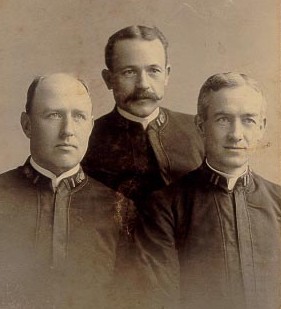
|
[The officers of the Overland
Relief Expedition. From left to right]: "Lt. E. P.
Bertholf; Dr. S. J. Call; Lt. D. H. Jarvis."; no date/photo
number; photo by W. H. Stalee [of] 1007 F. St., Washington,
D.C." Bertholf collection.
The officers were awarded specially struck medals from Congress for their heroic actions in saving the lives of the stranded whalers. |
| Post card image; no caption/date/photo number;
photographer unknown. Arctic file. The crew of the Bear take a moment to relax for the camera while anchored in Alaskan waters in this undated post-card image. Note the pair of underwear drying on the line. Arctic file. |
|
| No caption/date/photo
number; photographer unknown.
Crewmen celebrating Christmas on board the Bear while on the Bering Sea, circa 1905. |
|
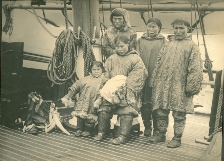 |
No caption/date/photo number;
photographer unknown. Scanned from E.P. Bertholf's scrapbook (MB
318).
The cutters of the Bering Sea Patrol served as floating courts as well as hospitals. They delivered mail and policed Alaska and its adjacent waters. They protected the native populations and safeguarded the area's abundant natural resources. Here a native family poses for the official photographer on board the Bear. |
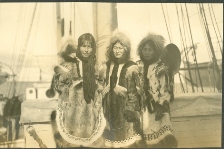 |
No caption/date/photo number;
photographer unknown. Scanned from E.P. Bertholf's scrapbook (MB
318).
Native women with their children visit the Bear. |
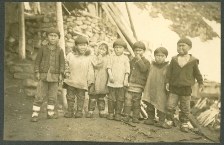 |
No caption/date/photo number;
photographer unknown. Scanned from E.P. Bertholf's scrapbook (MB
318).
Native children pose for a RCS photographer. |
| No official caption/date/photo number; photographer unknown. Scanned from E.P. Bertholf's scrapbook (MB 318). | |
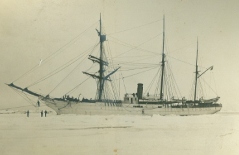 |
"The Bear in the
ice off Cape Romantzoff, June 4th 1900."; no photo number.
Photo scanned from a scrap book entitled: "The U.S. Revenue Cutter Bear Bering Sea and Arctic Cruise 1900." A notation written in the book indicates that the photos were taken by "Chief Eng. Spear, Asst. Eng. Wood, Asst. Eng. Norman, Dr. S. J. Call and R. N. Hawley." The scrapbook is believed to have been the property of crewman R.N.Hawley. |
| "Route of the Bear
[1900 Cruise]."
Photo scanned from a scrap book entitled: "The U.S. Revenue Cutter Bear Bering Sea and Arctic Cruise 1900." A notation written in the book indicates that the photos were taken by "Chief Eng. Spear, Asst. Eng. Wood, Asst. Eng. Norman, Dr. S. J. Call and R. N. Hawley." The scrapbook is believed to have been the property of crewman R.N.Hawley. |
|
|
No official caption/date/photo number; photographer
unknown. Scanned from E.P. Bertholf's scrapbook (MB 318).
The crew of each cutter conducted infantry drill training exercises in the event an armed shore party might be needed. |
|
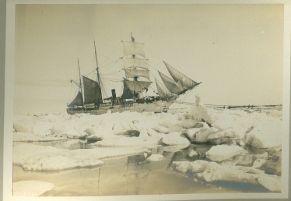 |
No official caption/date/photo
number.
Photo scanned from a scrap book entitled: "The U.S. Revenue Cutter Bear Bering Sea and Arctic Cruise 1900." A notation written in the book indicates that the photos were taken by "Chief Eng. Spear, Asst. Eng. Wood, Asst. Eng. Norman, Dr. S. J. Call and R. N. Hawley." The scrapbook is believed to have been the property of crewman R.N.Hawley. |
| "Officers of the Coast Guard Bering Sea Patrol Fleet, 1908." No photo number; photographer unknown. Arctic file. | |
| "Commissioned Officers; SEPT 1909-McCullough, Perry, Rush & Thetis at Unalaska."; no photo number; photographer unknown. Arctic file. | |
| "U.S. Rev. Cutter
PERRY wrecked on Tonki Point, St. Paul Island."; no
date/photo number; photographer unknown. Scanned from E.P.
Bertholf's scrapbook (MB 318).
The dangers of sailing in Arctic waters was always great and the RCS had its share of casualties. Here is the Cutter Perry, lost after running aground on Tonki Point, St. Paul Island on 27 July 1910. Although she was a total loss, all hands were saved. The Cutter Tahoma was lost four years later off the Aleutian Islands, but again, without loss of life. |
|
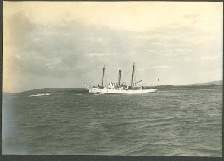 |
No caption/date/photo
number; photographer unknown. Scanned from E.P. Bertholf's
scrapbook (MB 318).
Another view of the grounded Perry. |
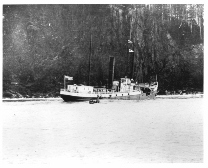 |
No caption/date/photo number;
photographer unknown.
The U.S. Lighthouse Service tender Armeria, assigned to Ketchikan, Alaska, ran aground off Cape Hinchinbrook on 20 May 1912 while delivering supplies for the construction of the Cape Hinchinbrook lighthouse. Note the inverted national ensign. She was declared a total loss but fortunately there were no casualties. |
| "Lieut. Commander
Edward H. Smith [;] June, 1931 in Washington, D.C. assigned to
participate in the Graf Zeppelin polar flight."; Photo No. 1;
photographer not indicated.
LCDR Smith was appointed as a scientific member of a proposed polar flight of the German dirigible Graf Zeppelin. The 8,000 mile arctic flight took place in late July, 1931. Photo was scanned from RADM Smith's scrapbook of his trip aboard the dirigible Graf Zeppelin over the Arctic in 1931. He wrote an account of this expedition that was published in the Geographical Review. Click here to access a copy of his article. |
|
| "Members of the
Expedition: LT. Comdr. Smith - Prof. Samoilovitch - Lincoln
Ellsworth. Outside the hangar at Friedrichshafen."; Photo No.
13; photographer not indicated.
Photo taken in July, 1931. Scanned from RADM Smith's scrapbook of his trip aboard the dirigible Graf Zeppelin over the Arctic in 1931. |
|
| "Lincoln Ellsworth
[;] Edward H. Smith."; Photo No. 22; photographer not
indicated.
Photo taken in July, 1931. Scanned from RADM Smith's scrapbook of his trip aboard the dirigible Graf Zeppelin over the Arctic in 1931. |
|
| "Friedrichshafen,
Germany, July 23, 1931. Lt. Comdr. Smith describing the
proposed polar flight of the Graf Zeppelin to Col. Weiss, U.S.A.,
Military Attache', Berlin."; Photo No. 12; photographer not
indicated.
Scanned from RADM Smith's scrapbook of his trip aboard the dirigible Graf Zeppelin over the Arctic in 1931. |
|
| No caption/date; Photo
No. 92; photographer not indicated.
A chart of the flight of the Graf Zeppelin. The dirigible departed Leningrad on July 26, 1931 and returned to Leningrad on July 30, 1931. Scanned from RADM Smith's scrapbook of his trip aboard the dirigible Graf Zeppelin over the Arctic in 1931. |
|
|
No caption/date; Photo No. 62; photo by
Pacific & Atlantic Photo "Bilderdienst Der Chicago Tribune
und New York Daily News [;] Berlin SW68 Zimmerstrasse 70."
Scanned from RADM Smith's scrapbook of his trip aboard the dirigible Graf Zeppelin over the Arctic in 1931. |
|
| No caption/date; Photo
No. 63; photographer unknown.
Scanned from RADM Smith's scrapbook of his trip aboard the dirigible Graf Zeppelin over the Arctic in 1931. |
|
| No caption/date; Photo
No. 74; photographer not indicated.
Launching a weather/scientific balloon from the Graf Zeppelin. Scanned from RADM Smith's scrapbook of his trip aboard the dirigible Graf Zeppelin over the Arctic in 1931. |
|
| No caption/date; Photo
No. 84; photographer not indicated.
Scanned from RADM Smith's scrapbook of his trip aboard the dirigible Graf Zeppelin over the Arctic in 1931. |
|
| No caption/date; Photo
No. 112; photographer not indicated.
LCDR Smith aboard the Graf Zeppelin. Scanned from RADM Smith's scrapbook of his trip aboard the dirigible Graf Zeppelin over the Arctic in 1931. |



